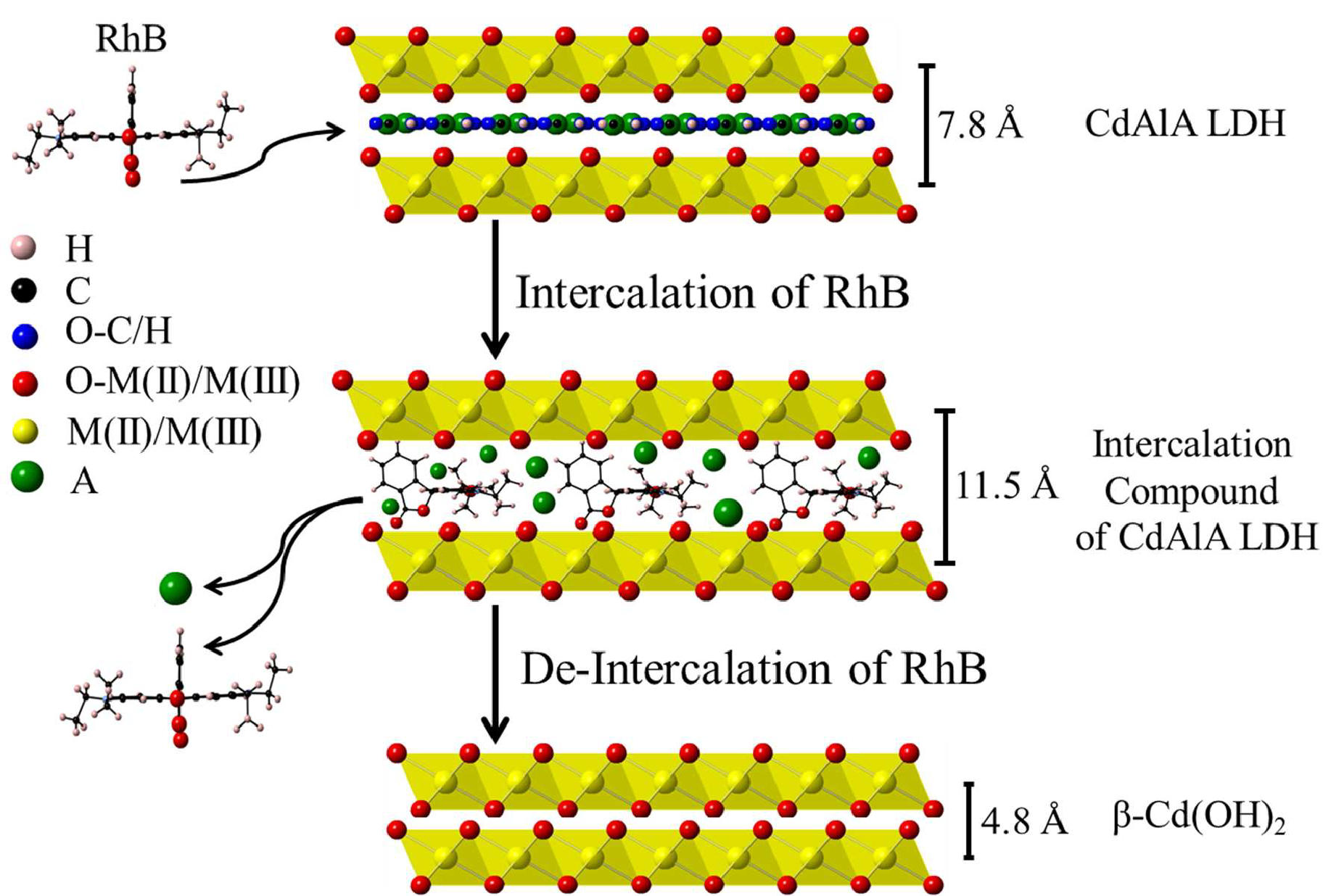

Cadmium-Aluminum layered double hydroxide (CdAl LDH) is thermodynamically unstable and transforms to Cd(OH)2 and Al(OH)3 in a short period of time. We present a reaction-diffusion framework that enables us to use in situ steady-state fluorescence spectroscopy to study the kinetics of intercalation of a fluorescent probe (Rhodamine B (RhB)) during the formation of the CdAl LDH and its de-intercalation upon the conversion of the LDH phase to the β phase (Cd(OH)2). The method involves the diffusion of sodium hydroxide into a hydrogel gel matrix containing the aluminum and cadmium ions as well as the species we wish to incorporate in the interlayers of the LDH. The existence of RhB between the LDH layers and its expel during the transition into the β phase are proved via fluorescence microscopy, XRD and ssNMR. The activation energies of intercalation and de-intercalation of RhB are computed and show dependence on the cationic ratio of the corresponding LDH. We find that the energies of de- intercalation are systematically higher than those of intercalation proving that the dyes are stabilized due to the probe-brucite sheets interactions.
